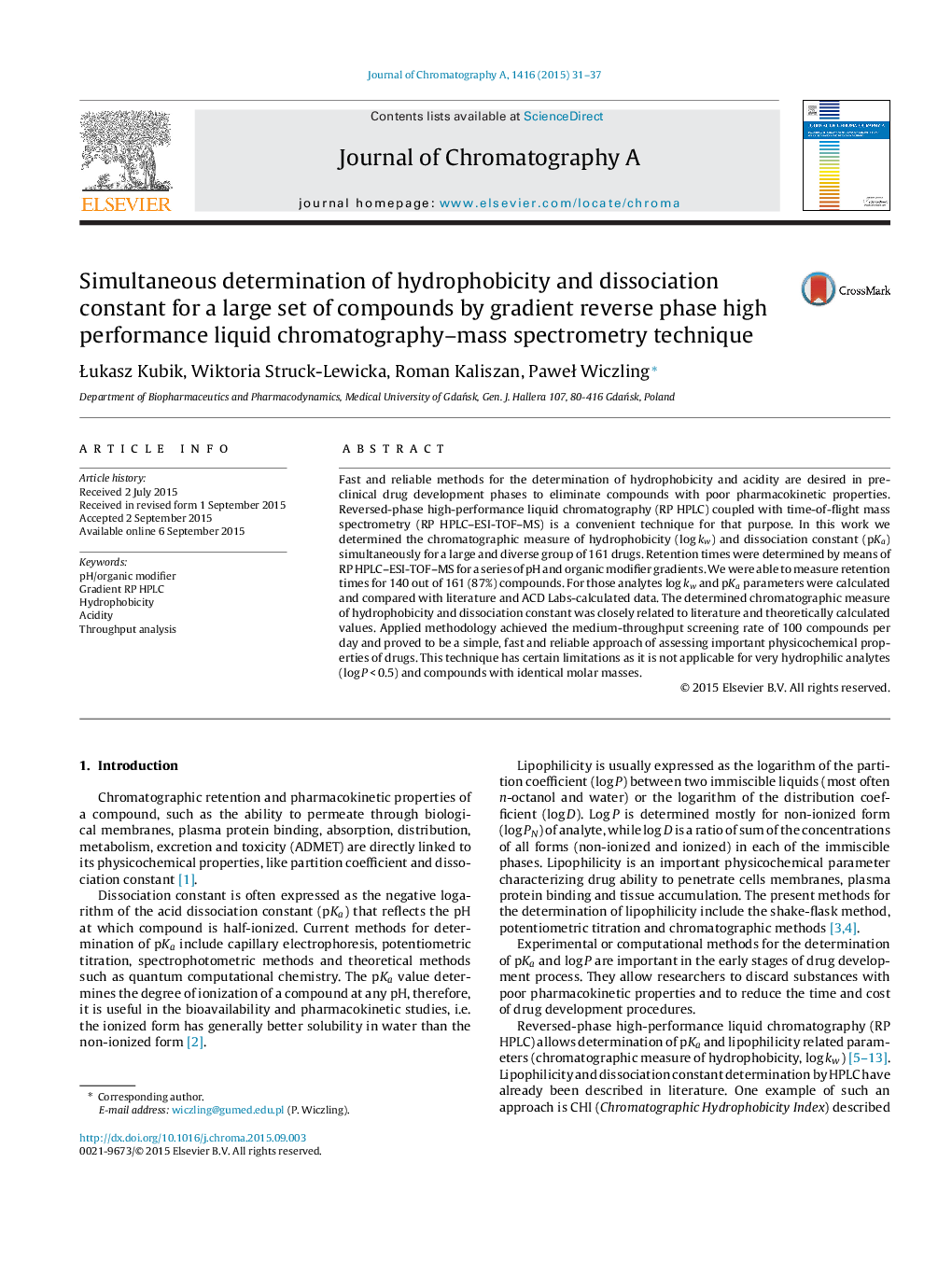| Article ID | Journal | Published Year | Pages | File Type |
|---|---|---|---|---|
| 1199084 | Journal of Chromatography A | 2015 | 7 Pages |
•The method of log P and pKa determination was tested on a large set of analytes.•It achieved a medium-throughput screening rate of 100 compounds per day.•Advantages and disadvantages of the method are discussed.
Fast and reliable methods for the determination of hydrophobicity and acidity are desired in pre-clinical drug development phases to eliminate compounds with poor pharmacokinetic properties. Reversed-phase high-performance liquid chromatography (RP HPLC) coupled with time-of-flight mass spectrometry (RP HPLC–ESI-TOF–MS) is a convenient technique for that purpose. In this work we determined the chromatographic measure of hydrophobicity (log kw) and dissociation constant (pKa) simultaneously for a large and diverse group of 161 drugs. Retention times were determined by means of RP HPLC–ESI-TOF–MS for a series of pH and organic modifier gradients. We were able to measure retention times for 140 out of 161 (87%) compounds. For those analytes log kw and pKa parameters were calculated and compared with literature and ACD Labs-calculated data. The determined chromatographic measure of hydrophobicity and dissociation constant was closely related to literature and theoretically calculated values. Applied methodology achieved the medium-throughput screening rate of 100 compounds per day and proved to be a simple, fast and reliable approach of assessing important physicochemical properties of drugs. This technique has certain limitations as it is not applicable for very hydrophilic analytes (log P < 0.5) and compounds with identical molar masses.
